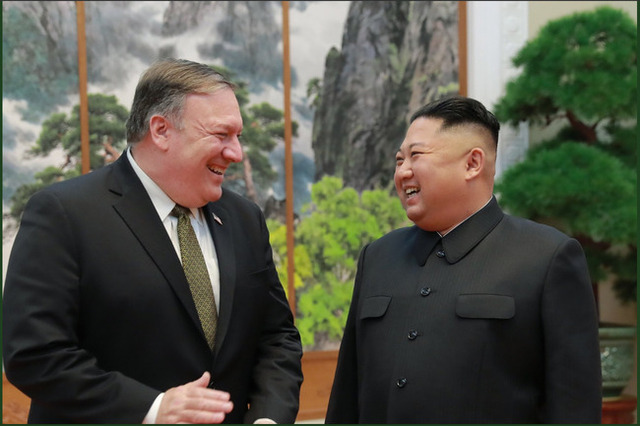 |
|
US Secretary of State Mike Pompeo during a joint press conference with Mexican Foreign Secretary Luis Videgaray in Mexico City on Oct. 19. (AP)
|
Pompeo hints at negotiations to work out summit details during VOA interview
As North Korea and the US continue their tug-of-war over what should come first --denuclearization by the North or corresponding measures by the US -- leading up to their second summit, the US is trying to engineer a breakthrough by calling for a high-level meeting at the end of October. The next issue is whether the high-level meeting will help the two sides break out of their bottleneck and bring about a preliminary agreement that will quickly lead to a second summit between North Korean leader Kim Jong-un and US President Donald Trump. “We’re working on finding dates and times and places [for the summit] that will work for each of the two leaders [President Trump and Chairman Kim]. I’m very hopeful we’ll have senior leader meetings here in the next week and a half or so between myself and my counterpart to continue this discussion so that when the two of them get together there’s real opportunity to make another big step forward on denuclearization,” US Secretary of State Mike Pompeo said during an interview with Voice of America on Oct. 19. The mention of “the next week and a half” means that high-level North Korea-US talks could be held at the end of this month. Considering that the working-level meeting between US Special Representative for North Korea Stephen Biegun and North Korean Vice Foreign Minister Choe Son-hee has not been held, it’s uncertain whether Pompeo’s reference to “senior leader meetings” means that the working-level meeting would be held first or that he would move forward with a high-level meeting. At any rate, a high-level meeting is likely to provide a critical opportunity to reach a compromise on the debate over denuclearization and corresponding measures prior to the summit. During Pompeo’s fourth trip to North Korea on Oct. 7, the US reportedly asked the North to take more steps, such as disclosing a list of its nuclear weapons and facilities, in addition to the closure of its nuclear facilities in Punggye Village, Dongchang Village and Yongbyon. This reportedly elicited strong pushback from the North and a demand for the US to take corresponding measures, such as formally ending the Korean War and easing sanctions. The central challenge of the North Korea-US negotiations is to create an action plan while balancing each other’s demands. In connection with this, South Korean President Moon Jae-in said during his summit with Danish Prime Minister Lars Lokke Rasmussen on Oct. 20 that “Making a timetable for the denuclearization process and the US’ corresponding measures will be the agenda of the second North Korea-US summit.” “The reason that Choe Son-hee and Stephen Biegun haven’t held working-level talks yet is because North Korea and the US haven’t reached an agreement on their list of demands [about denuclearization and corresponding measures]. Pompeo proposed meeting with the North Koreans because the North and the US have arranged an agenda through backroom negotiations and the US has fixed its position about easing sanctions,” said Cho Sung-ryul, senior research fellow for the Institute for National Security Strategy. If the framework of the agenda for the second North Korea-US summit is put in place during the high-level talks, it will be possible for Biegun and Choe to launch their negotiations about the list of concessions the two sides will swap in regard to the initial steps toward denuclearization and corresponding measures.
 |
|
US Secretary of State Mike Pompeo with North Korean leader Kim Jong-un during the former’s fourth visit to Pyongyang on Oct. 7. (US President Donald Trump’s Twitter account)
|







